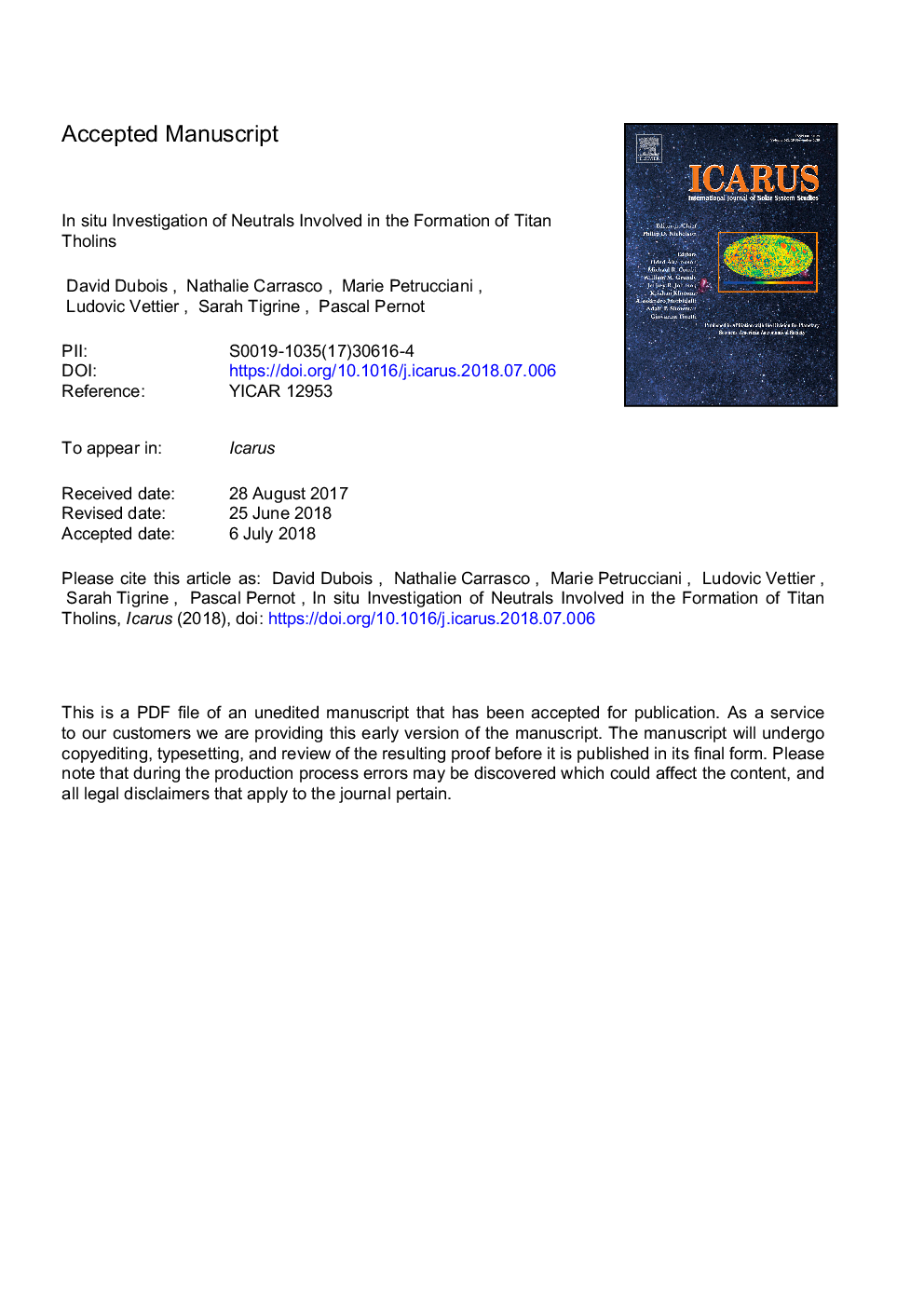| Article ID | Journal | Published Year | Pages | File Type |
|---|---|---|---|---|
| 8133670 | Icarus | 2019 | 48 Pages |
Abstract
However, the chemical composition and mechanisms leading to their formation were out of reach for the instruments onboard Cassini. In this context, it is deemed necessary to apply and exploit laboratory simulations to better understand the chemical reactivity occurring in the gas phase of Titan-like conditions. In the present work, we report gas phase results obtained from a plasma discharge simulating the chemical processes in Titan's ionosphere. We use the PAMPRE cold dusty plasma experiment with an N2CH4 gaseous mixture under controlled pressure and gas influx. An internal cryogenic trap has been developed to accumulate the gas products during their production and facilitate their detection. The cryogenic trap condenses the gas-phase precursors while they are forming, so that aerosols are no longer observed during the 2â¯h plasma discharge. We focus mainly on neutral products NH3, HCN, C2H2 and C2H4. The latter are identified and quantified by in situ mass spectrometry and infrared spectroscopy. We present here results from this experiment with mixing ratios of 90-10% and 99-1% N2CH4, covering the range of methane concentrations encountered in Titan's ionosphere. We also detect in situ heavy molecules (C7). In particular, we show the role of ethylene and other volatiles as key solid-phase precursors.
Related Topics
Physical Sciences and Engineering
Earth and Planetary Sciences
Space and Planetary Science
Authors
David Dubois, Nathalie Carrasco, Marie Petrucciani, Ludovic Vettier, Sarah Tigrine, Pascal Pernot,
